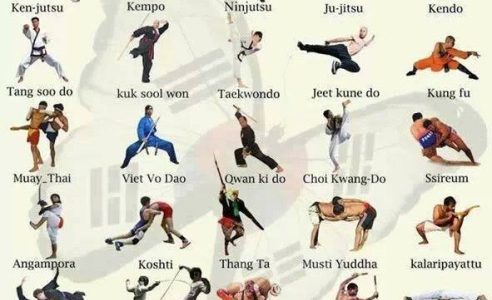The Growth And Historical Context Of Martial Arts Worldwide
The Growth And Historical Context Of Martial Arts Worldwide
Blog Article
Posted By-Chu Silverman
Martial arts have a fascinating history that spans centuries and continents. You might discover it intriguing how old methods like Shuai Jiao and Kalaripayattu prepared for modern combat techniques. These self-controls not just stress physical skills however also mirror the societies that birthed them. As click for source explore their development, take into consideration exactly how globalization has transformed these typical kinds into hybrid styles. What influences do you believe have shaped today's martial arts landscape?
Ancient Martial arts: The Foundations of Combat
As you delve into the world of old martial arts, you'll uncover the abundant structures that formed fight techniques throughout societies. Early techniques focused on Self-Defense and survival, often integrating strikes, grappling, and weaponry.
In old China, as an example, techniques like Shuai Jiao emphasized tosses and joint locks, while India's Kalaripayattu showcased agility and fluid activity. Japanese samurai developed Kenjutsu, a polished swordsmanship that highlighted discipline and technique.
These martial arts served not just for battle but additionally as a means of personal development, instilling values like respect and perseverance. mcduffy kajukenbo blending of these techniques in time prepared for the diverse martial arts you see today, each mirroring the distinct ideologies and demands of its culture.
The Cultural Impact on Martial Arts Advancement
While martial arts frequently show the practical requirements of a culture, they also embody the social values and ideas of their beginnings. When you explore various martial arts, you'll notice exactly how they're influenced by religion, ideology, and social standards.
For instance, the emphasis on regard and technique in Japanese martial arts originates from Zen Buddhism and samurai society. In contrast, Brazilian Jiu-Jitsu promotes flexibility and approach, formed by the demand for performance in a diverse, modern setting.
You may find that the routines, uniforms, and training methods show an area's history and identity. By understanding these social influences, you strengthen your recognition of martial arts and their duty fit human experiences around the world.
Modern Adaptations and the Globalization of Martial arts
Martial arts have actually transformed significantly in recent decades, adjusting to modern culture and international impacts. You'll observe that standard forms have blended with modern methods, creating hybrid styles like MMA. These adaptations satisfy diverse audiences, making martial arts accessible and appealing globally.
With the increase of social media sites and electronic platforms, you can locate tutorials and competitions from all corners of the globe, damaging geographical barriers. This globalization has actually resulted in a common recognition for different disciplines, from Brazilian Jiu-Jitsu to Taekwondo.
As you involve with these arts, you'll understand they're not nearly battle; they promote physical fitness, self-control, and psychological well-being.
Inevitably, modern-day adjustments have improved the martial arts landscape, making it a dynamic and developing method.
Verdict
In checking out the history and evolution of martial arts, you uncover a remarkable mix of methods, societies, and viewpoints. From old disciplines like Shuai Jiao and Kalaripayattu to the modern versatility seen in MMA, martial arts reflect mankind's mission for Self-Defense and individual development. As you involve with these techniques, you not only acquire skills yet likewise a much deeper appreciation for the varied practices that shape our globe today. So, proceed your trip and embrace the art of battle!
